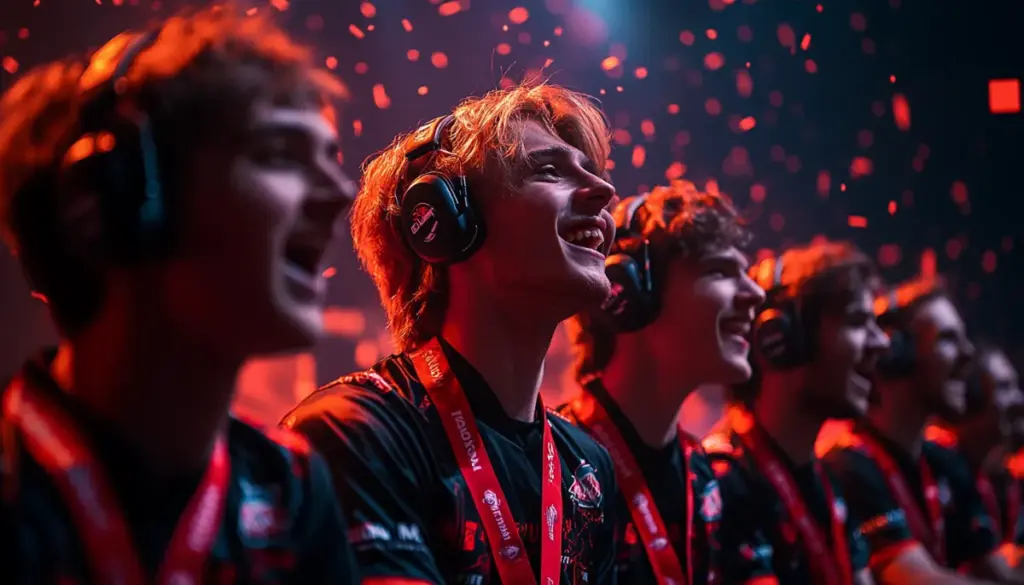
TL;DR
- Esports success can be short-lived, so those teams that have managed to maintain a high level over an extended period are rare.
- There a number of different ways teams can dominate, but it requires a combination of skills and innovation to repeat success.
- Due to the number of human and competitive variables in play, teams can fall apart much quicker than they were built.
- Newer teams, such as Atlanta FaZe and Team Vitality, are establishing a new era of domination, but as others have found, it can be hard to stay on top for long.
In traditional sports, a dynasty is defined as an individual, team, or franchise that is consistently achieving sustained success over an extended period. While an esports team’s success isn’t measured in yearly finals over decades like the Chicago Bulls in the 1990s, esports tends to have a more tightly packed schedule. Multiple majors and numerous smaller events are common throughout the year.
The best esports teams that have unquestionably dominated their games during their peak will hold records that span at least two years or more. These teams go through rapid meta-shifts and intense competition yet still reign supreme. These individuals are all-stars, yet they’re more than the sum of their parts; together, they’re unstoppable dynasties.
What makes a team dominant
The best esports teams demonstrate consistent success, a strong core roster, and innovation.
For consistent success, the most legendary squads demonstrate championship-caliber performance across multiple competitive seasons and game iterations. Esports dynasties compress their dominance into 2-3 year windows due to faster meta shifts, roster turnover, and a much lower pro gaming career lifespan. Valorant esports teams like Fnatic, who had a historic run in 2023, are still among the top esports teams in their game. However, Valorant has a healthy competitive scene where several teams keep each other in check.
Next, a strong core roster forms the basis of their team. The greatest teams develop near-telepathic synergy between key players yet have the individual mechanical skills to justify their place on the roster. Their playstyle and personality also give their fans a face to root for. Brawl Stars esports teams like Zeta Division may have won world finals three times in a row, but each time is with a completely new roster. It’s impressive on its own merit, but it’s not a dynasty.
Dominant teams rarely keep their win streak from pure mechanical skill alone; they innovate or shock audiences with unique playstyles. Consider individual signature plays like inSec’s hyper-aggressive Lee Sin or team efforts like Alliance’s annoying but highly effective “Rat Dota.” These teams and players leave a lasting impression that trickles into regular matches, raising everyone’s understanding of their game.
5 dominating teams and dynasties
Overwatch: San Francisco Shock
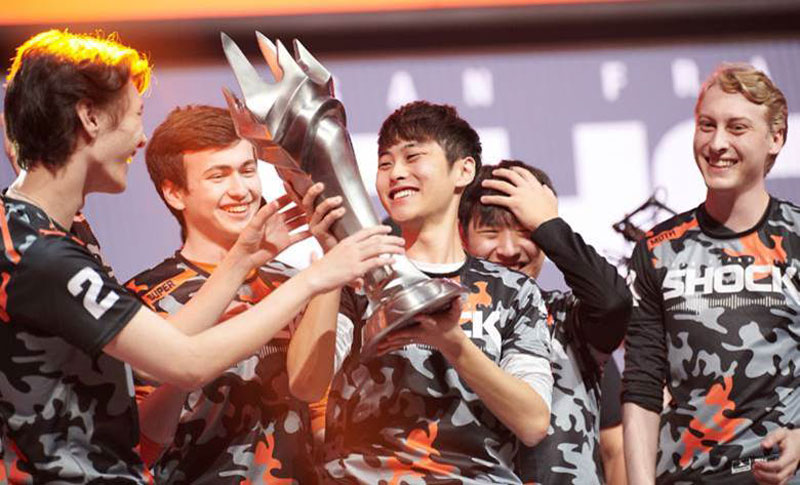
- Back-to-back Overwatch League champions (2019, 2020)
- First perfect stage (7-0 match, 28-0 map record in 2019 Stage 2)
- Three midseason tournament titles
- Record 18-3 regular season in 2020
- The only team to have defeated every other Overwatch League team without dropping a map
The San Francisco Shock became the Overwatch League’s first (and only) dynasty by winning consecutive championships in 2019 and 2020. After a middling inaugural season in 2018, the Shock redefined excellence in 2019 by completing the league’s first and only “golden stage,” winning every map in Stage 2—a feat unmatched to this day.
Their revolutionary hyper-aggressive playstyle defined the GOATS meta. In this mirror match-up playstyle, the Shock proved that their players had the individual finesse to outmatch other Overwatch esports teams. From super’s reckless Reinhardt to Sinatraa’s Zarya with the highest damage in the league to Rascal’s flexible picks and DPS Baptiste, to Viol2t and Moth’s ever-reliable support duo, and ChoiHyoBin’s best-in-class D.Va. They swept the grand finals against Vancouver Titans with no one to challenge them.
Their 2020 title defense proved their flexibility, overcoming the role lock meta-shifts and roster changes, including the retirement of 2019 MVP Sinatraa, and navigating a season disrupted by the COVID-19 pandemic. With Ans emerging as a world-class Widowmaker and Striker’s Tracer reaching new heights, they effortlessly adapted to the new 2-2-2 format. Their back-to-back championships remain unmatched in Overwatch League history, establishing them as the most successful franchise in the game’s competitive scene.
Dota 2: OG

- First and only team to win back-to-back International championships (TI8, TI9)
- TI8 champions as underdogs after last-minute roster formation
- TI9 dominant run (lost only one game in the main event)
- Highest tournament esports earnings of all time
OG’s back-to-back International victories represent the most improbable and dominant stretch in Dota 2 history. Their TI8 run began as a disaster—just two months before the tournament, captain Fly and star s4 abandoned the team to join rivals Evil Geniuses. Left with a pub star (Topson) who had never played professionally and a carry (Ana) returning from retirement.
They clawed through the lower bracket with eight consecutive elimination matches, culminating in a grand finals masterpiece against PSG.LGD. These matches are a must-watch for any Dota 2 fan, where moments like Ceb’s clutch call on Axe are on the same hype level as Evo Moment 37.
A year after their Cinderella run, OG returned not as underdogs but as architects of a new Dota era. Their theory-crafting was on a whole other level, pioneering builds like carry Io or letting the roaming support JerAx dictate the game’s pace. They could adapt on the fly with the famous Gyro Diffusal Blade that secured them the grand finals. The mad geniuses were unconventional, entertaining, and unstoppable during their TI9 victory tour.
Call of Duty: OpTic
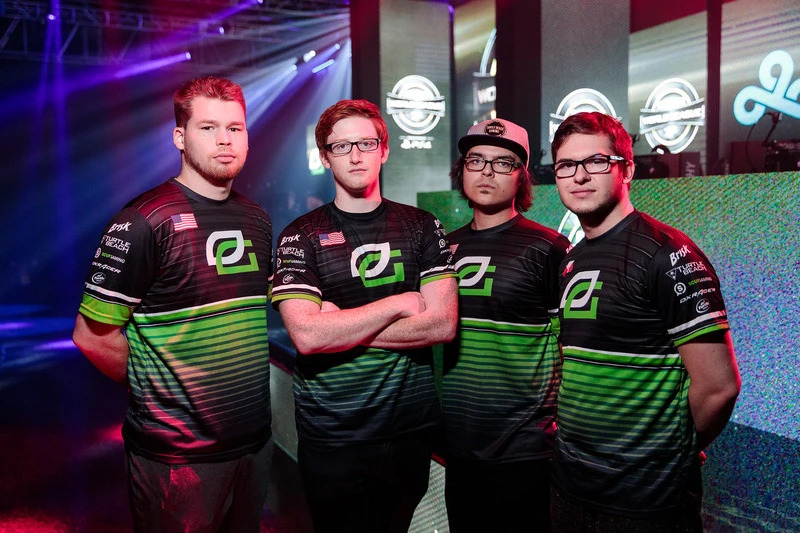
- 18 major LAN tournament wins, including MLG Anaheim 2016 and CoD Championship 2017
- 25 Grand Finals appearances (10 consecutive)
- 28 Top four finishes across Advanced Warfare, Black Ops 3, and Infinite Warfare
- Undefeated in winners bracket at CWL Paris 2017 and CWL Stage 2 Playoffs 2017
- First team to win back-to-back MLG Pro League championships
- Crimsix became the most successful player in CoD history (37+ championships)
OpTic Gaming’s Call of Duty roster from 2015 to 2018 epitomized dominance in esports. The team’s core comprises Scump, FormaL, and Crimsix, alongside Nadeshot, and then Karma, is Call of Duty esports’ last widely accepted dynasty.
Aside from their numerous major LAN tournament victories, including the 2017 Call of Duty World League Championship, where FormaL earned MVP honors, they achieved remarkable statistics across various game modes. For instance, in Black Ops III, they boasted an 86.49% win rate in Hardpoint, and in Infinite Warfare, their Search and Destroy win rate was an impressive 76.09%.
Beyond statistics, OpTic Gaming’s influence extended to its fanbase and grew the CoD competitive scene. Known as “The Green Wall,” their intense rivalry against FaZe Clan was instrumental in shaping esports as an entertainment industry.
However, the dynasty’s decline began with the transition to Call of Duty: WWII in 2018. Despite retaining their core trio, OpTic struggled to adapt. It suffered early exits at major tournaments, including a disappointing 13th-16th place finish at CWL Seattle, marking the official end of their historic run. Internal tensions, roster changes, and the rise of new contenders further accelerated their fall from dominance, closing the book on one of esports’ most legendary eras.
Counter-Strike: Astralis
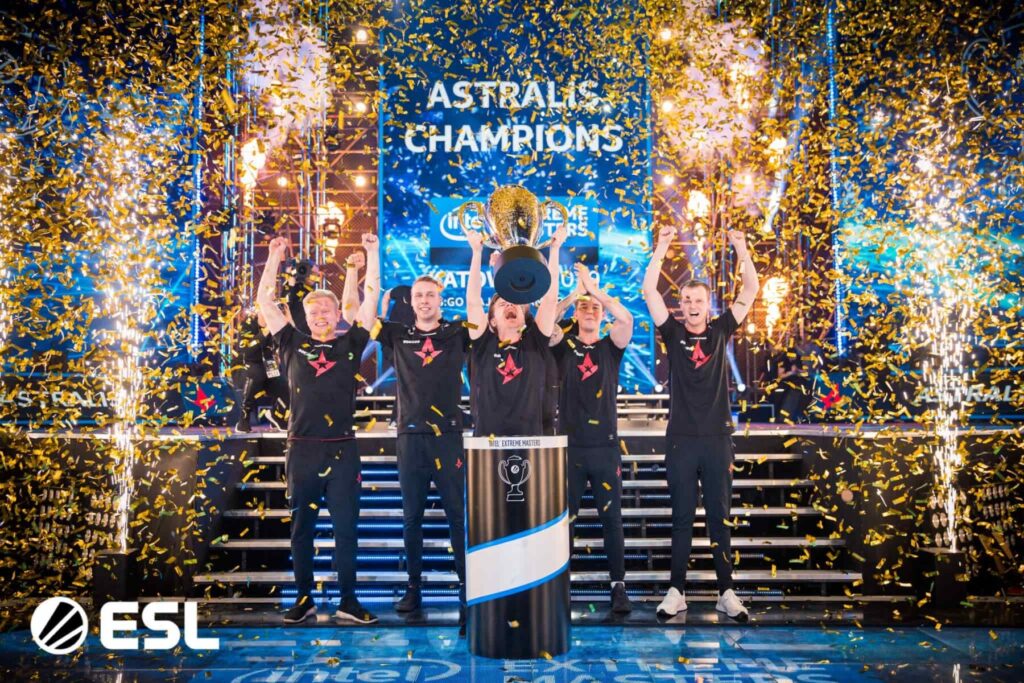
- First team to win three consecutive CS:GO Majors
- Record four Major championships
- Longest reign as #1 ranked team on HLTV (406 consecutive days)
- Pioneered holistic player training with a dedicated sports psychologist and personal staff
Astralis rose from being labeled “chokers” to becoming the most dominant team in CS:GO history. Early struggles in high-pressure semifinals earned them a reputation for crumbling under stress. But they made a game-changing decision: hiring a sports psychologist. This move, rare in esports at the time, helped them conquer mental blocks to become champions.
The results were staggering. With a roster featuring device, dupreeh, Xyp9x, gla1ve, Magisk, and coach zonic, Astralis dominated 2018-2019 like no team before. They won four Majors, including three consecutively, a feat unmatched in CS:GO. Astralis cemented their legacy by becoming the first team to claim the Intel Grand Slam in 2018, completing the $1 million challenge.
Known for their precise and terrifying utility use, they leveraged creative grenade setups to give themselves an advantage before entering a site. Iconic executions like grenade airstrikes on Mirage’s nest or raining Molotovs in Inferno’s B-Site are still mesmerizing to watch. Though roster changes and burnout eventually ended their reign, their peak stands as the most systematically perfect era in Counter-Strike history.
League of Legends: T1 (formerly SK Telecom T1)
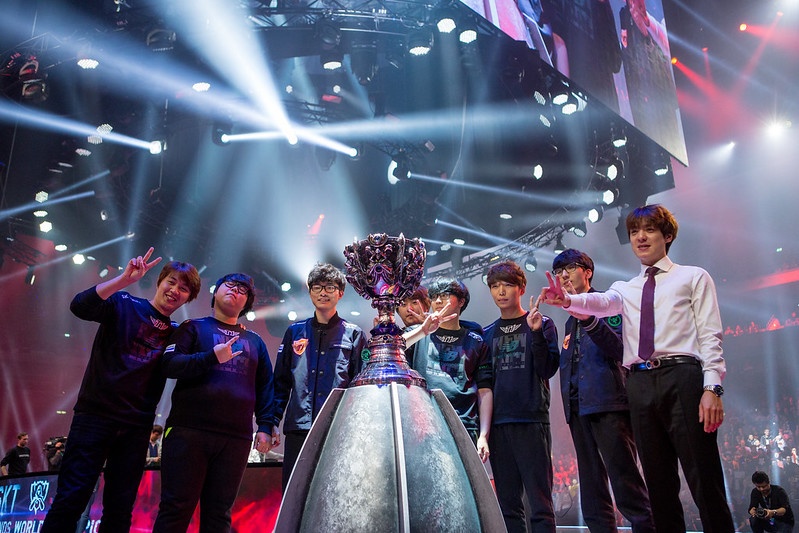
- 5x World Champions (2013, 2015, 2016, 2023, 2024), the most in LoL history.
- First team to win back-to-back Worlds titles with the same roster
- Undefeated 18-0 regular season in LCK 2022 Spring
- 6.8M peak viewership at 2023 Worlds Finals
T1 is the most decorated organization in League of Legends history, with five World Championship titles (2013, 2015, 2016, 2023, 2024). Their sustained dominance spans two distinct eras: the original Faker-Bengi dynasty (2013-2016) and the current roster’s back-to-back Worlds victories (2023-2024).
T1’s first era redefined the competitive League through mechanical perfection and complete dominance. The 2013 roster, with Faker’s legendary Zed outplay against Ryu, quickly put them on the map. They then finished flawlessly by sweeping Royal Club in the grand finals. T1 had their strongest roster in 2015, where MVP MaRin thrived during the infamous Juggernaut patch. The following year, Samsung Galaxy gave fans one of the best grand finals in League of Legends history, taking T1 to the fifth map.
But they returned from their crushing defeat to sweep and dethrone T1 in 2017. After that loss, T1 underwent a transitional era marked by roster instability and near-misses. Though Faker remained, the organization cycled through many different players across positions. At one point, they had an experimental 10-member roster. The low point came in 2018 when T1 entirely missed the Worlds.
T1’s resurgence began with the strategic assembly of its winning roster—young talents Zeus, Oner, and Gumayusi, mentored by Faker, were joined by innovative support Keria in 2022. After their heartbreaking 2022 Worlds finals loss to DRX, this core became an unstoppable force, dominating the 2023 tournament (losing just three games total) and setting viewership records in their finals sweep. Their 2024 back-to-back championship victory over Bilibili Gaming solidified this new era of dominance.
What causes strong teams to fall?
As the saying goes, once you reach the top, there’s nowhere else to go but down. While the top esports teams have shown that they can always take another step to new heights, inevitably, they can’t stay there forever. The two biggest causes for the best esports teams falling from grace are player burnout and roster changes. Other reasons include structural shifts, competition catching up, an inability to keep up with the meta, and internal conflict.
Burnout is a real problem in esports. Esports organizations invest in staff and facilities to care for their players’ mental health. However, stress and anxiety go hand-in-hand in any competitive career. It’s no wonder that most of OG’s Dota 2 roster retired after TI9 (even though we all know they each came back soon after). Pro players take a break or retire after a tense, competitive season.
Roster changes are another significant factor contributing to the decline of strong esports teams. While adjustments are sometimes necessary to address performance issues or adapt to new strategies, frequent or poorly managed roster changes can disrupt team synergy and cohesion. Yet, it’s all too common and even expected that players will move organizations after significant events, like the post-TI shuffle.
Who’s next?
Two esports teams are currently dominating their game: Atlanta FaZe in Call of Duty and Team Vitality in Counter-Strike 2.
Atlanta FaZe has already established itself as one of the most dominant teams in the modern Call of Duty League (CDL), boasting multiple stage titles, a World Cup 2024 win, and a 2021 CoD Champs victory. Their core trio of Simp, aBeZy, and Cellium has remained intact since 2020, dominating many events but failing to retain momentum to keep a consistent win streak. While debates persist over whether they’ve achieved true dynasty status, their early 2025 dominance could be the final push to convince everyone.
Another one is Team Vitality in Counter-Strike 2. They have firmly established themselves by securing prestigious titles in 2024-2025, including victories at IEM Katowice and IEM Cologne. However, Team Spirit is rapidly emerging as a formidable contender, showcasing its potential by winning the Shanghai Major tournament, led by the explosive talent donk.
Conclusion
At one point, these five top esports teams had such a tight hold on their games that it redefined the competitive landscape. These teams don’t just win; they dominate with such consistency that no one can deny their success. They pushed the competition to analyze, counter, and polish their innovations, raising the skill ceiling for everyone involved.
While no reign lasts forever, these teams’ legacies endure—not just in trophies but in how they transformed esports. Their stories remind us that true dominance is measured in wins and the mark left on the competitive landscape.
FAQs
T1 (League of Legends), led by Faker, holds the record for most World Championships (5) and Finals appearances. Their 2023 title run and 6.8M peak viewership are the icing on the cake.
Maryville University currently ranks among the best colleges with esports teams, having captured multiple national championships across League of Legends and Overwatch while developing world-class training facilities.
Fortnite is a highly competitive game with many top esports teams. However, Peterbot and Pollo had an unprecedented run in 2024 under Exceed with multiple wins and a global championship. Stay tuned to upcoming events to see which Fortnite esports teams will prove themselves in 2025.
San Francisco Shock remains unmatched, winning back-to-back OWL titles (2019-2020) and setting records like a perfect 28-0 stage.

